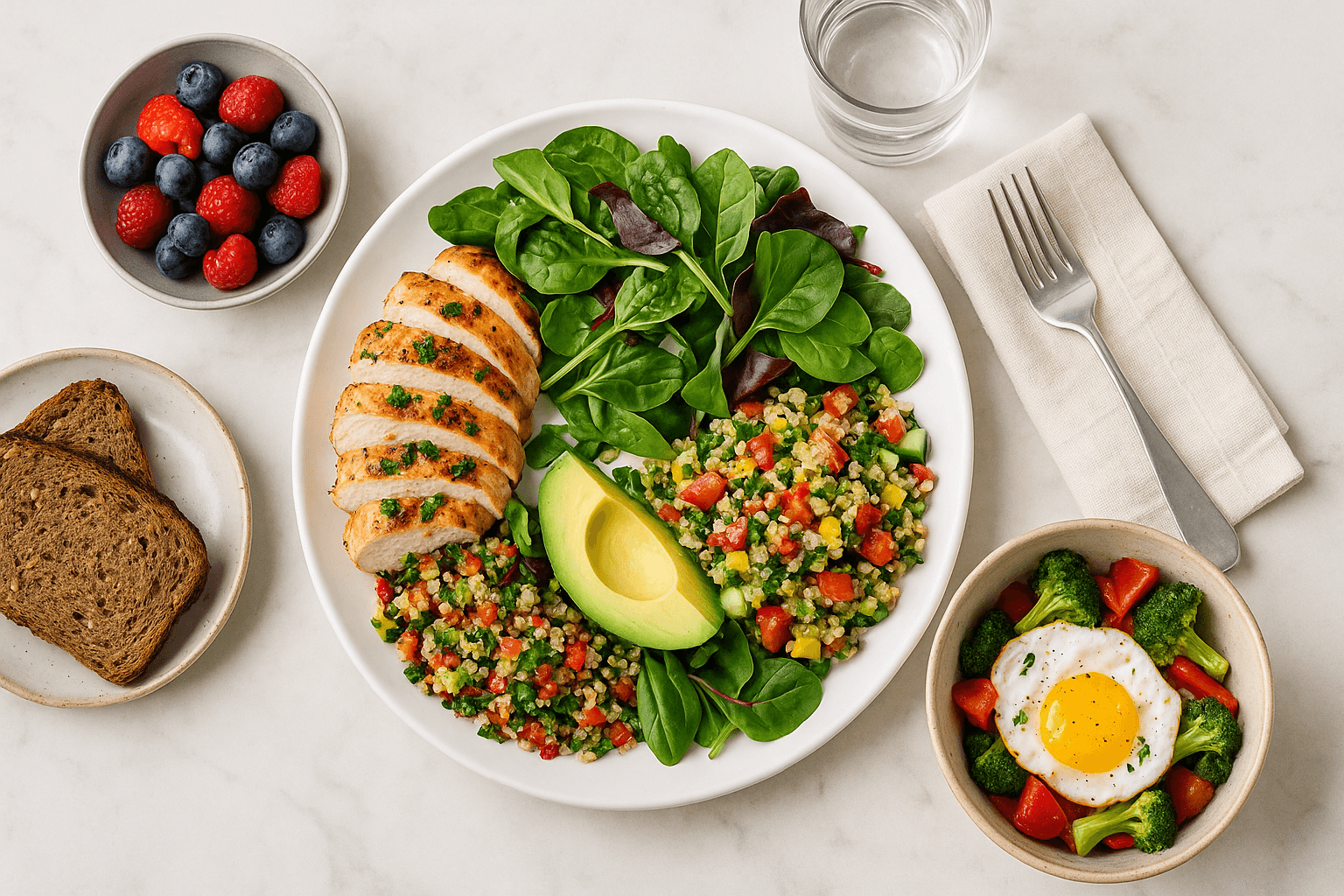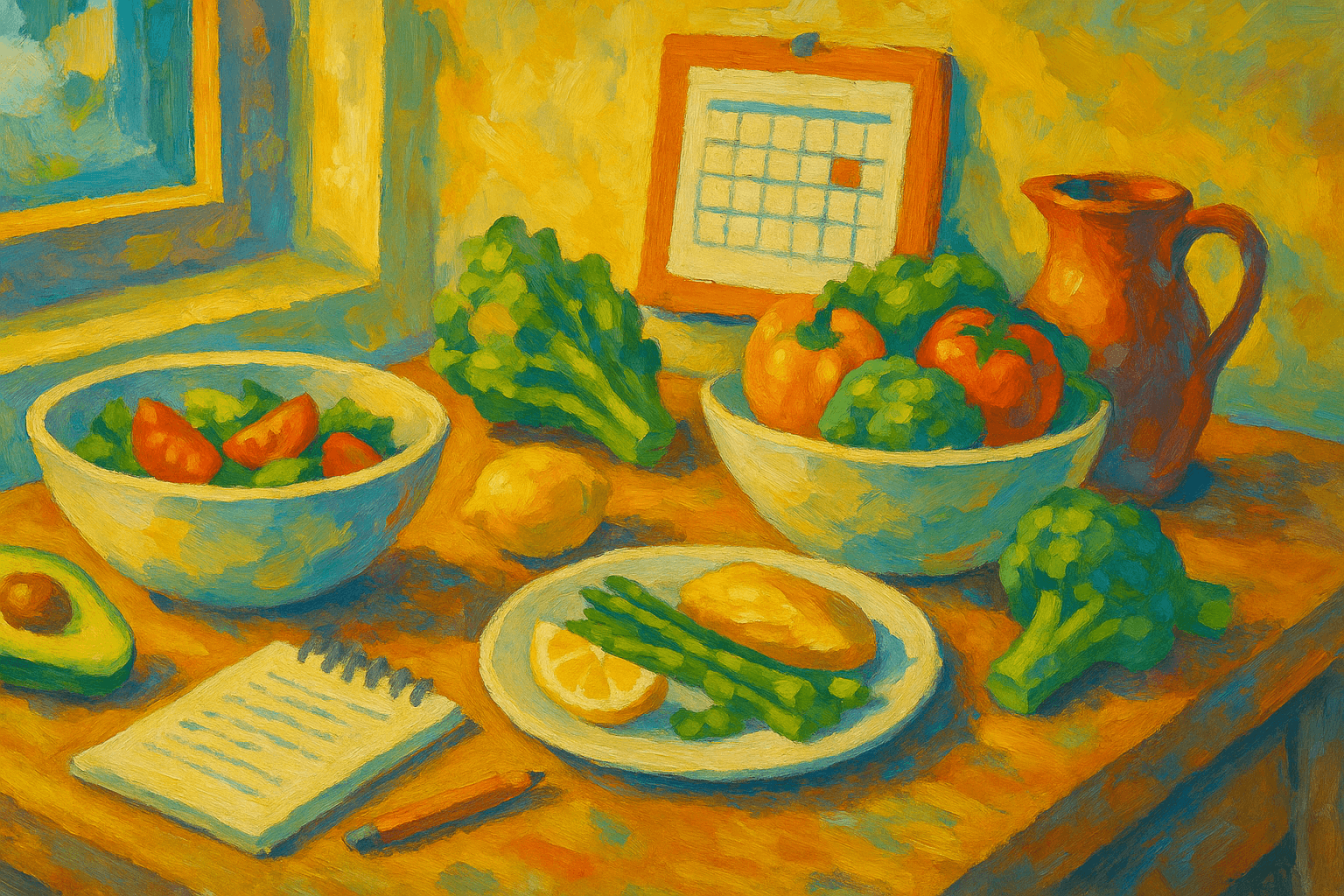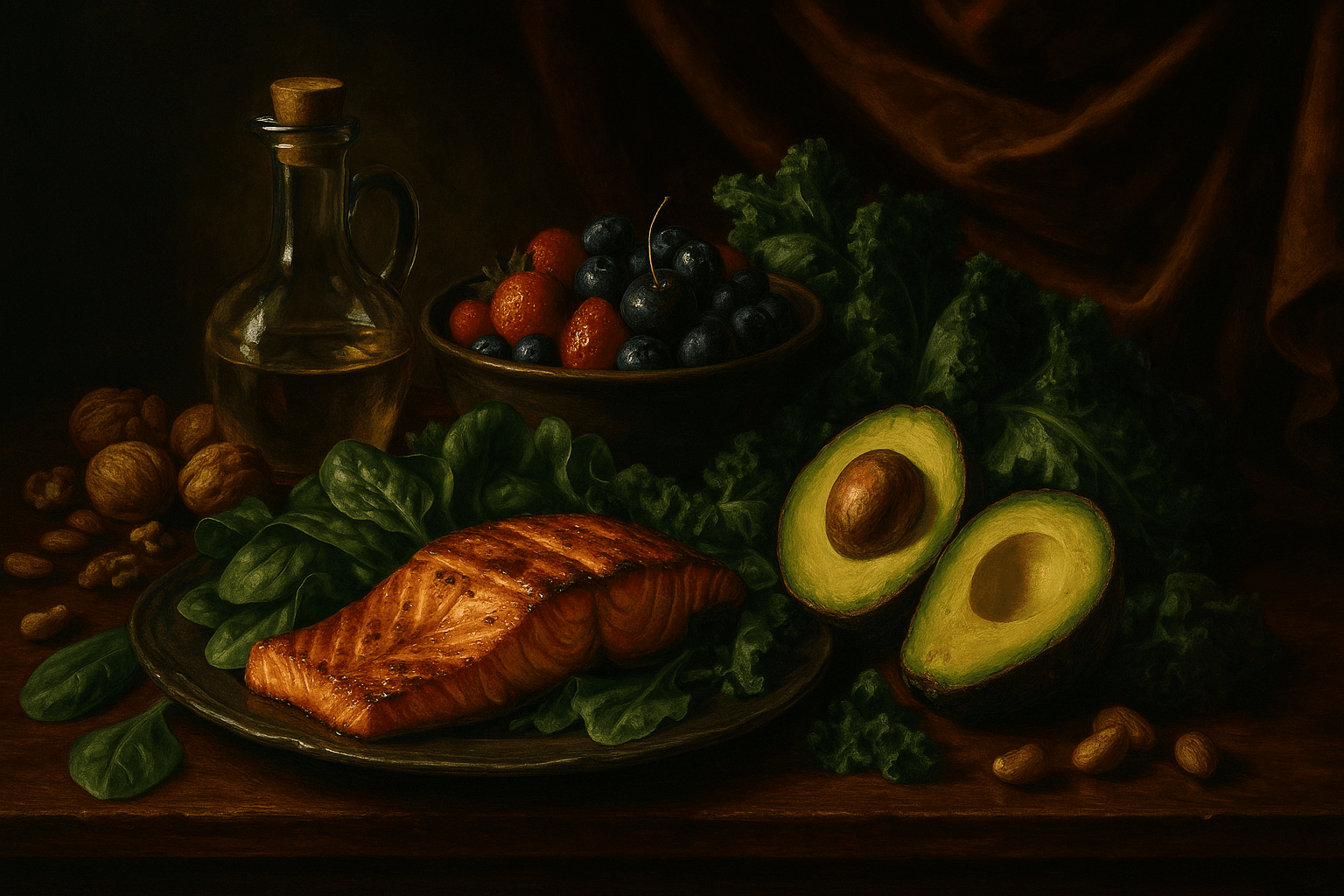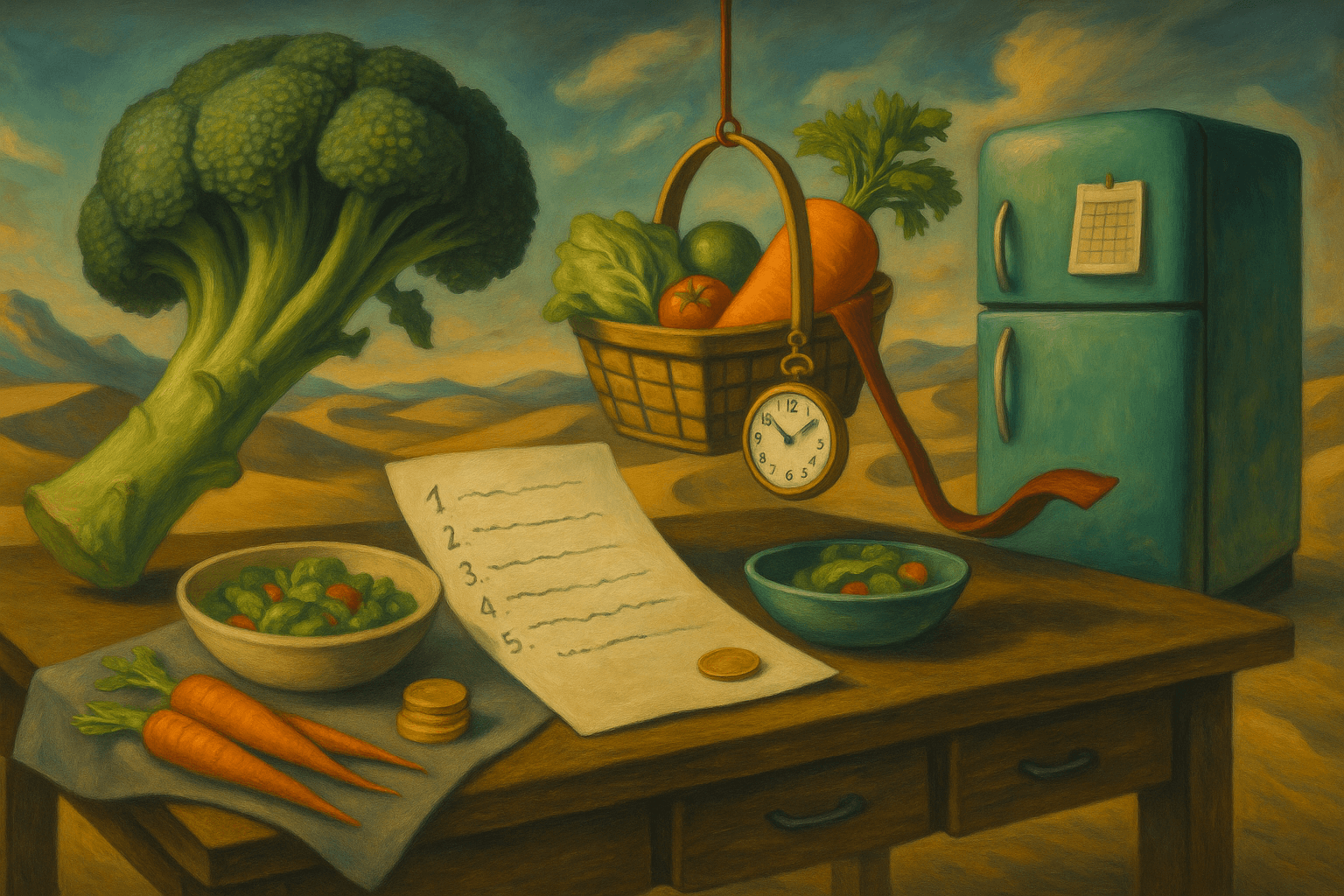The Balanced Flexitarian Week: A Practical 7-Day Meal Plan That Supports Energy, Longevity, and Real Life
Published on June 25, 2025
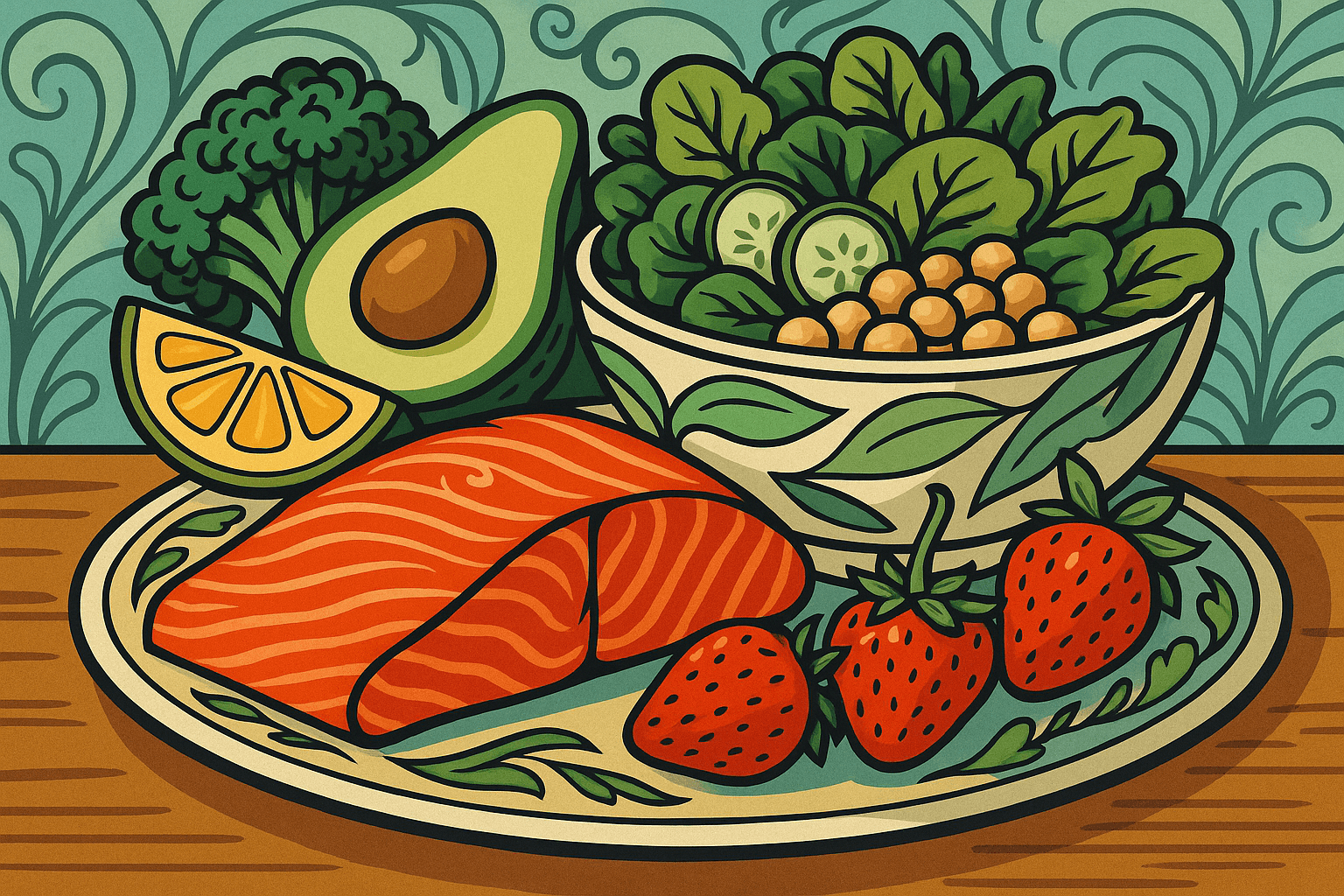
A Flexible, Nourishing Way to Eat
You can eat well without extremes. The balanced flexitarian style centers on plant-based, whole-food meals with the option to include animal protein — always rich in fiber, antioxidants, and flavor.
Why Flexitarian Eating Supports Long-Term Health
Anti-inflammatory, fiber-rich, and gut-friendly
Helps regulate blood sugar naturally
Supports sustainable food habits
Reduces waste, increases creativity in the kitchen
Adapts easily to travel, events, and changing schedules
What Makes This 7-Day Plan Work
Elastic-form meals: add or remove animal protein without losing nutrition
Batch-friendly: ingredients repeat to simplify prep
Nutrient diversity: protein, healthy fats, fiber, and color in every meal
No calorie obsession: eat to feel energized, not to track numbers
How to Use This Plan
Sunday prep: cook grains, roast veg, make one sauce
Adjust portions based on hunger and activity
No guilt: every meal is a new opportunity
Leftovers = lunch: plan once, eat twice
Make it yours: swap herbs, proteins, or sauces as desired
Day 1
Breakfast: Overnight oats with almond milk, chia seeds, strawberries, walnuts
Snack: Sliced cucumber with hummus
Lunch: Spinach-lentil salad with roasted carrots, quinoa, tahini dressing
Snack: Plain yogurt + honey + pumpkin seeds
Dinner: Grilled salmon, sautéed kale, mashed sweet potato
Swaps: Use tempeh or tofu instead of salmon
Hydration tip: Sip mint-lemon water all day
Day 2
Breakfast: Greek yogurt, blueberries, flaxseeds, maple syrup
Snack: Banana with almond butter
Lunch: Chickpea-avocado wraps with tomato and lettuce
Snack: Unsweetened trail mix
Dinner: Stir-fried tofu, broccoli, snow peas, brown rice
Boost it: Add sesame seeds and tamari
Prep tip: Mash chickpeas ahead of time for quick lunches
Day 3
Breakfast: Scrambled eggs, spinach, tomatoes, whole grain toast
Snack: Apple slices with peanut butter
Lunch: Farro bowl with roasted veggies, lemon-garlic vinaigrette
Snack: Celery with tahini
Dinner: Shrimp skewers, quinoa tabbouleh, arugula salad
Variations: Swap shrimp for eggs, add mint or parsley
Day 4
Breakfast: Smoothie (banana, spinach, oat milk, protein powder, frozen mango)
Snack: Roasted chickpeas
Lunch: Sweet potatoes with black beans, corn, avocado, salsa
Snack: Cottage cheese with pineapple
Dinner: Baked chicken thighs, wild rice, green beans
Vegetarian version: Use tempeh instead of chicken
Prep tip: Double the salsa for other meals
Day 5
Breakfast: Chia pudding with almond milk, raspberries, slivered almonds
Snack: Carrot sticks with hummus
Lunch: Zoodles with pesto, cherry tomatoes, grilled halloumi
Snack: Orange slices with cashews
Dinner: Grilled cod, couscous, steamed broccoli
Tip: Double pesto for salad dressing
Low-waste: Use citrus peels for infused vinegar or water
Day 6
Breakfast: Steel-cut oats with cinnamon, apple, sunflower seeds
Snack: Boiled egg and grapes
Lunch: Spinach-quinoa salad with roasted beets, goat cheese, walnuts
Snack: Rice cakes with almond butter
Dinner: Stuffed bell peppers (lentils, brown rice, tomato sauce)
Batch tip: Roast extra beets for snacks
Shortcut: Use pre-cooked lentils
Day 7
Breakfast: Yogurt with granola, chia, and kiwi
Snack: Edamame pods with sea salt
Lunch: Whole grain sandwich with hummus, roasted veggies, sprouts
Snack: Dark chocolate and berries
Dinner: Stir-fried veggies, soba noodles, miso dressing
Add-ins: Tofu, tempeh, pickled ginger
Bonus: Double stir-fry for tomorrow’s lunch
Weekly Grocery Shortlist
Grains: Quinoa, brown rice, oats, farro, couscous, soba noodles, wraps, whole grain bread
Proteins: Eggs, Greek yogurt, tofu, tempeh, salmon, shrimp, chicken thighs, cod, canned beans/lentils
Vegetables: Spinach, kale, carrots, sweet potatoes, beets, bell peppers, broccoli, arugula, tomatoes, cucumbers, zucchini, snow peas, corn, green beans
Fruits: Bananas, apples, strawberries, blueberries, kiwi, grapes, oranges, mango, pineapple
Pantry: Olive oil, tahini, hummus, nut butters, seeds, nuts, herbs, spices, vinegars, miso
Dairy & Alt-Dairy: Cottage cheese, goat cheese, halloumi, plant milks, protein powder
Flexitarian Snack Bank
Hard-boiled egg with baby carrots
Edamame with chili flakes
Cottage cheese + pineapple
Apple slices + tahini
Roasted nuts + dark chocolate
Greek yogurt + hemp seeds
Hummus + cherry tomatoes
Oatmilk banana protein smoothie
Alternate based on mood and schedule
Prep Tools & Tricks
Glass containers for prepped meals
Magnetic whiteboard to track leftovers
Keep 5 “go-to” meals for tired nights
Pre-cook proteins: eggs, tofu, chicken
Start dinner with a big salad or broth
Bottom Line
Flexitarian eating is flexible, nutritious, and rooted in real life. It’s about consistency, not perfection. Show up with good food — most of the time — and let that become your fuel for long-term energy, health, and joy.
Let your plate adapt to you — not the other way around.



